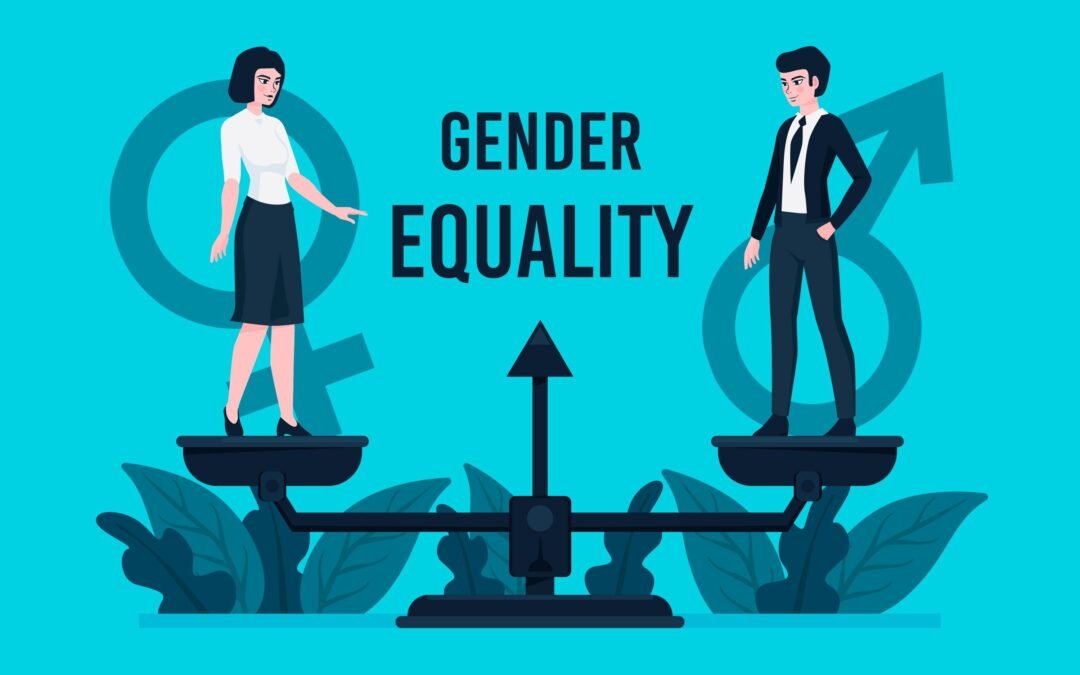Importance of Gender equality in sustainable development
Introduction:
The article highlights the often-overlooked intersection between gender equality and sustainable energy development,emphasizing the crucial role women play in achieving sustainable energy for all.
Importance of Gender Equality in Sustainable Energy:
Gender equality is not only a matter of social justice but also a prerequisite for sustainable development .Women’s participation in energy access,production,and consumption is vital for over all economic growth and environmental sustainability.
Gender Equality in Energy Access:
-Women bear primary responsibility for household energy management, yet they often lack access to modern energy sources, relying instead on harmful alternatives like biomass and kerosene.
-Lack of access to clean energy disproportionately affects women and children, leading to health risks associated with household air pollution.
Gender Disparity in the Energy Sector:
-The energy sector remains one of the least gender-diverse sectors,with women representing a small percentage of full-time employees.
-Factors contributing to this gender disparity include disparities in educational access,limited opportunities for technical skills training,and inequitable company policies.
Bridging the Gender Gap:
-Main streaming gender in energy policies at various levels is crucial to addressing these challenges.
-Initiatives like the Women at the Fore fron tprogram and the Energy Transitions Innovation Challenge (ENTICE) provide platforms for women to drive sustainable energy practices.
-Distributed Renewable Energy (DRE) initiatives ,such as Solar Mamas, offer opportunities for women to be come solar engineers and increase access to clean energy.
Smart Investment in the Future
-Empowering women in the energy sector is not only morally right but also economically beneficial,potentially boosting global GDP by trillions of dollars.
-Increasing women’s participation in the energy sector leads to innovative solutions, increased productivity,and improved social and environmental outcomes.
Shift in Dialogue:
-The dialogue on gender and energy has evolved,recognizing women as key agents of change across the energy sector.
-Gender-responsive and women-led initiatives in the clean energy space have been successful, highlighting the importance of harnessing the power of women in creating a more inclusive, prosperous,and sustainable world.
Conclusion:
As we celebrate International Women’s Day, it’s essential to acknowledge the critical role of women in the energy sector and work towards creating a more gender-equal and sustainable future.
Navigating India’s Labour Landscape: Trends, Challenges, and Implications
Introduction:
The article addresses the critical intersection between gender equality and sustainable energy development in India, highlighting the significant role women play in achieving sustainable energy for all.
Predominance of Labour-Based Incomes:
-The majority of Indians earn their livelihood through labour rather than ownership of capital or land
-Approximately 90% of the working population in India is engaged in informal employment,lacking job security,benefits, and social protection.
Impact on Economic Growth and Living Standards
-The state of the labour market,including jobcreation,wage growth,and job quality,significantly impacts GDP growth and improvements in living standards.
-The focus on GDP growth rates often overlooks the crucial role of the labour market indetermining the welfare of the masses.
ImprovementsinLabourForceParticipationandUnemployment:
Recent data from the Periodic Labour Force Survey (PLFS) shows an increase in Labour Force Participation Rate (LFPR) and a decline in the unemployment rate,particularly among youth.
Trends in Employment Composition:
-The rise in LFPR and decline in unemployment are primarily driven byself-employment, particularly unpaid familyworkers.
-While the overall number of workers in each employment type has increased, the proportion of unpaid family labour has risen significantly.
Quality of Work and Earnings:
-Despite an increase in the number of workers, there has been a decline in the proportion of desirable employment types.
-Earnings for wage and salaried workers have stagnated,while casual workers have seen moderate growth in earnings.
Macro economic Implications:
-The majority of the work force is engaged in low-quality work, impacting labour productivity and economic growth.
-Stagnant earnings, particularly among poorer sections,pose challenges for consumer expenditure and investment, potentially leading to a vicious cycle
Conclusion:
The article underscores the need for a deeper examination of labour market dynamics beyond headline GDP growth rates. It emphasizes the importance of improving job quality,increasing wages,and fostering sustainable economic growth to ensure the welfare of the work force and achieve long-term prosperity.
Strengthening India’s Naval Presence: Establishing INS Jatayu
Strategic Importance of Minicoy Island:
•INS Jatayu on Minicoy Island, part of Lakshadweep, aims to enhance India’s security presence in the Indian Ocean region.
•Proximity to critical Sea Lanes of Communication (SLOC) and the Chinese naval expansion in the Indian Ocean highlight the strategic significance of this base.
Key Infrastructure and Facilities
•The base will feature radar facilities, jetties, airfields, and BrahMos supersonic cruise missiles.
•These developments align with India’s long-term capability development plan to bolster its maritime security.
Inauguration of Infrastructure at Karwar Naval Base:
•Defence Minister Rajnath Singh inaugurated new infrastructure at Karwar naval base in Karnataka, including piers and residential towers.
•The expansion aims to accommodate ships, submarines, and personnel, significantly increasing the base’s capacity.
Surveillance and Response Capabilities:
•Radar facilities on Minicoy Island will enhance surveillance capabilities.
•BrahMos missiles with a range of around 450km provide flexibility in responding to threats.
Strategic Vision and Significance:
•Navy Chief Admiral R. Hari Kumar emphasizes the importance of heightened surveillance amidst geopolitical developments.
•INS Jatayu and INS Baaz in the Andamans serve as crucial surveillance points for the Indian Navy.
Karwar Naval Base Expansion:
•Phase IIA of Project Seabird at Karwar naval base aims to accommodate more ships and submarines.
•Iconic infrastructure, including a Covered Dry Berth, will be a centerpiece of the expansion ,highlighting India’s naval modernisation efforts.

